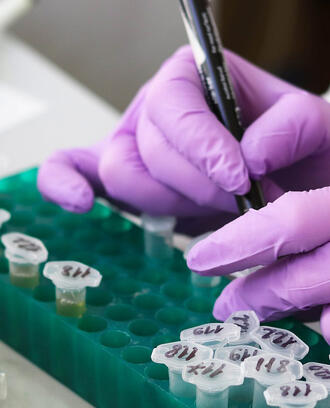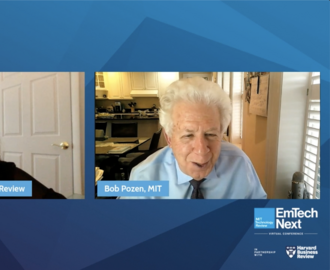Why there is no long-term tradeoff between lives and livelihoods in the pandemic
By
Does saving lives from COVID-19 necessarily mean sacrificing livelihoods? The idea that there is a tradeoff between health and wealth has dominated the discourse around appropriate policy responses to the pandemic. How should countries balance the lives saved by lockdowns, limitations on business hours and activities, and social distancing against pressures to reopen their economies?
Intuitively, the idea of a tradeoff makes sense. Until the vast majority of the population is successfully immunized, controlling the pandemic requires governments to restrict the interactions on which most economic and social activity depends. As individuals, too, we constantly weigh the risk of exposure against the desire to see our families and friends, dine out, or go to a store, film, concert, or the gym.
But in two recent studies (here and here) we find that the apparent tradeoff is illusory. Using analytical and simulation models and data from over 100 countries (comprising 7 billion people), we found countries converge to similar levels of interactions and activity, but with vastly different infection and death rates. Furthermore, suffering higher death rates did not allow countries to maintain higher levels of interaction or mobility.
This counter-intuitive result emerges because countries actually have little choice in how much they must reduce contact levels to control the epidemic. Few communities are willing to tolerate unchecked outbreaks and the horrendous number of deaths that result. As the body count grows, political pressure to restrict business activity and lock down builds, until action is taken. Even without government action, rising risks of contagion and death will cause individuals to take increasingly stringent actions to protect themselves. The greater the risk people perceive, the more they will stay home and avoid gatherings, restaurants, travel, brick-and-mortar businesses, and other activities.
How much high-risk interactions have to be reduced to quench an outbreak depends largely on the contagiousness of the virus itself, which does not vary significantly from country to country. What varies widely, however, is how many cases and how many deaths it takes to prompt strong enough actions to bend the curve and stop an outbreak. An online simulator provides resulting projections across different nations.
Some countries, like Australia, China, New Zealand, and Singapore, have been proactive, responding aggressively to even small spikes in cases, and have largely succeeded in bringing their epidemics under control at death rates below 0.1 per million per day. Others, like the U.S. and several European and South American countries, have been more reactive. Seeking to minimize economic disruption, they delayed action until climbing deaths forced their hands. Ultimately, by choice or the force of intolerable death rates, both groups cut back interactions, but at vastly death rates.
The figure below plots deaths per day per million people against Re (the number of people, on average, each infectious individual infects before recovering or dying) for each nation, from June through December 2020. Re is tightly clustered between 0.9-1.3, well below the initial level of 2-4, indicating that government policies and individual actions have significantly reduced contacts and interactions that lead to transmission. However, the death rate in these nations varies by more than a factor of 100—from around 0.02 per million per day to well over 2 per million per day. In short, essentially all nations end up curtailing social and economic interactions by roughly the same amounts, but many suffer excessive death rates while others are able to limit the carnage. These results hold whether we measure social interaction levels based on transmission rates or using community mobility data.
Figure: Reported death rates (daily; per million; logarithmic scale) vs. estimated effective reproduction rates (Re), both averaged over June-Dec 2020. Source: “Rahmandad and Lim, 2020, Risk-Driven Responses to COVID-19 Eliminate the Tradeoff between Lives and Livelihoods”
Wildfire offers a useful analogy. Wildfires, like COVID-19 outbreaks, can grow rapidly from a single spark to a massive inferno. Containing and suppressing wildfires is expensive and resource-intensive, and evacuations disrupt people’s lives and businesses.
Imagine two communities facing wildfires. Both respond strongly at first, ordering mandatory evacuations and aggressively fighting the fire. In one community, the firefighters stay on the scene, chasing down hotspots and flare-ups before allowing people to return to their homes, schools, and work. They remain vigilant, knowing that the forest is still dry and any spark could start a new blaze, relaxing only when winter rains and snows end the threat. The short-run costs are high: firefighting is expensive, and evacuations disrupt people’s lives, communities, and economies, but life can return to normal relatively quickly, with less damage and fewer lives lost.
In the other community, however, people clamor to return to their homes as soon as possible. Business leaders complain that they are losing money every day the evacuation order remains in place. The fire isn’t out, they say, but it’s not growing anymore, and it’s mostly contained. To cut costs and restart the economy, the firefighters withdraw, and evacuation orders are lifted.
Of course, the fire would soon grow again. Embers lofted by the wind would spread it to new locations. The firefighters would have to return, with reinforcements, and even more people would be evacuated. The effort to avoid economic and social disruption backfires. Over the course of a fire season, the cumulative disruption, economic damage, and firefighting costs end up about the same or even higher, while more land and buildings burn, and more lives are lost.
While the world is working hard to roll out mass vaccination, overcoming the misleading notion of a tradeoff between lives and livelihoods could help many more countries save both. Fixating on the purported tradeoff makes countries and people reluctant to respond when death rates are low, dragging their feet to buy a few more days of ‘freedom’ or political expedience. Those delays end up costing both lives and freedoms as governments are forced to respond on a much larger scale later.
Instead, countries can reduce the severity of their ongoing epidemics by aggressively clamping down on outbreaks for a few short weeks, then containing and stabilizing death rates at much lower levels before allowing limited interactions. Thereafter, continued vigilance and swift action would keep deaths to a minimum, with no more of a sacrifice in interactions and activities, until vaccines can be deployed at scale.
Though it may be tragic that many countries are putting themselves through great pain for little gain, we see in this result a reason for hope. Despite all the challenges of this pandemic, we do not face a stark choice between saving lives or saving livelihoods. With patience, caution, and wise leadership, we can save both.
MIT Sloan School of Management Prof. Hazhir Rahmandad, Prof. John Sterman, and PhD student Tse Yang Lim are coauthors of Behavioral dynamics of COVID-19: estimating under-reporting, multiple waves, and adherence fatigue across 19 nations, which will be published in System Dynamics Review. Rahmandad and Lim are coauthors of “Risk-Driven Responses to COVID-19 Eliminate the Tradeoff between Lives and Livelihoods




